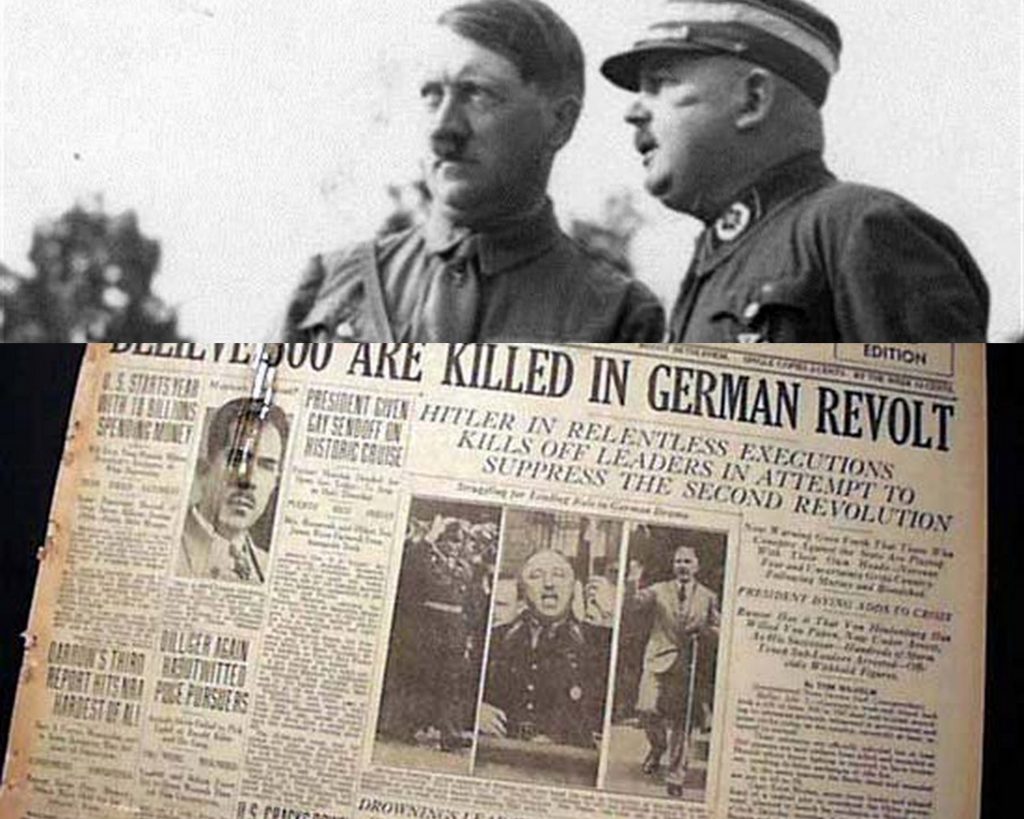
The most notable world news in 1934 was made in Germany and China. In Germany, in what became known as the “Night of the Long Knives”, Hitler consolidated his political power with a brutal purge of fellow Nazis, especially Ernst Roehm’s “Brownshirts”, a paramilitary organization whose violent tactics had been essential to Hitler’s seizure of power. Their usefulness was now much diminished and their power was seen as a threat to Hitler. He acted savagely by killing Ernst Roehm, the Brown Shirt’s leader, and hundreds of others, many having no connection with the Brown Shirts.
In China, Mao and his Communist forces began the “Long March” of nearly 6000 miles into the mountains of northern China to escape the army of Chiang Kai-shek. In the mountains Mao regrouped, and, after years of struggle, drove Chiang’s forces from the mainland onto the island of Taiwan. What may seem ancient history could well become the “casus belli” for war between China and the United States today.
The big news in the U.S. in 1934, of course, was the Depression. Congress approved the ERA (Economic Recovery Act) and the WPA (Works Progress Administration), the largest and most ambitious of President Franklin Roosevelt’s attempts to bring the country out of recession. Passage of the legislation encountered bitter resistance in Congress and a very conservative Supreme Court found important parts of FDR’s program unconstitutional, triggering his attempt to pack the Court.
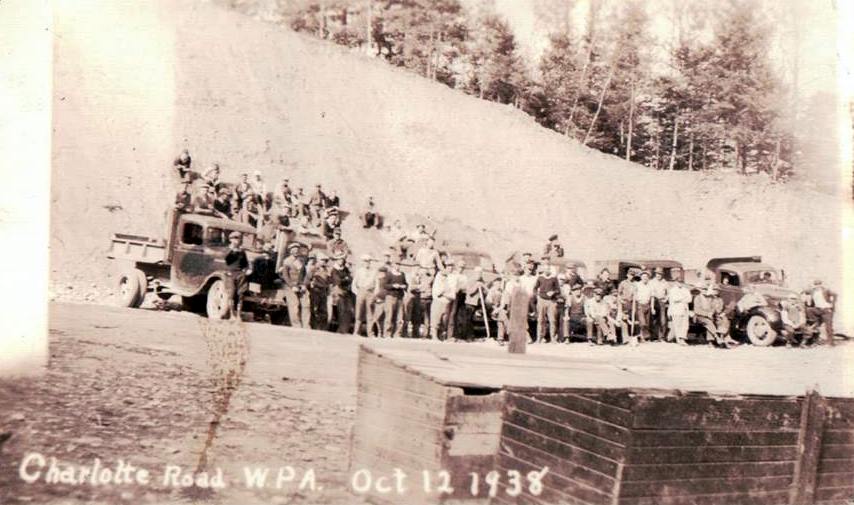
Programs such as the Civilian Conservation Corps (CCC), which locally operated from the CCC camp in Princeton, provided work for hundreds of unemployed local workers, including in the reconstruction of the Charlotte Road pictured above. While this photo is dated 1938, the CCC program was established in 1933 and significant projects were undertaken beginning in 1934.
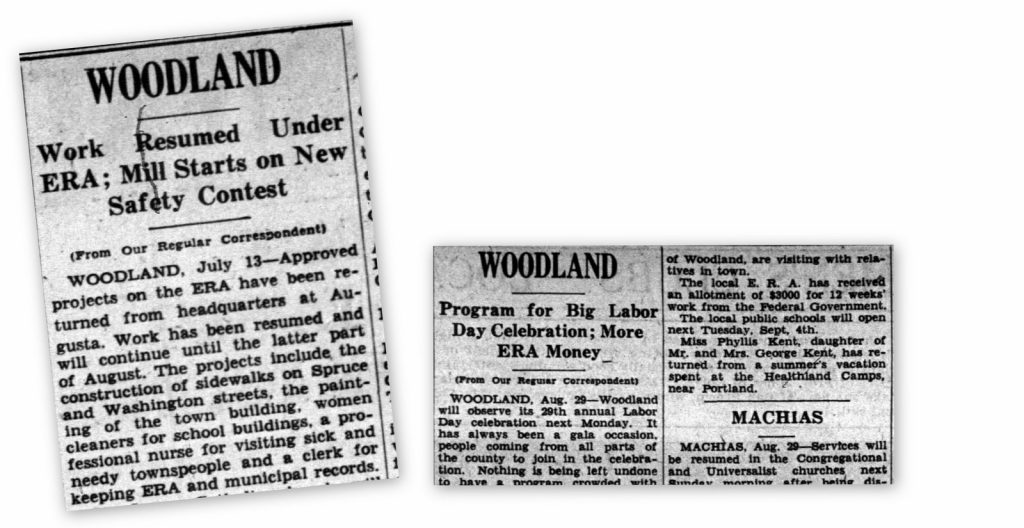
The power struggle in Washington had important consequences for the St. Croix Valley and especially the area’s economic engine: the Woodland Mill. Reports like those above from the Bangor Daily followed the influx of funds from the Federal programs which were essential to keeping the mill running and the economy from stalling out completely.
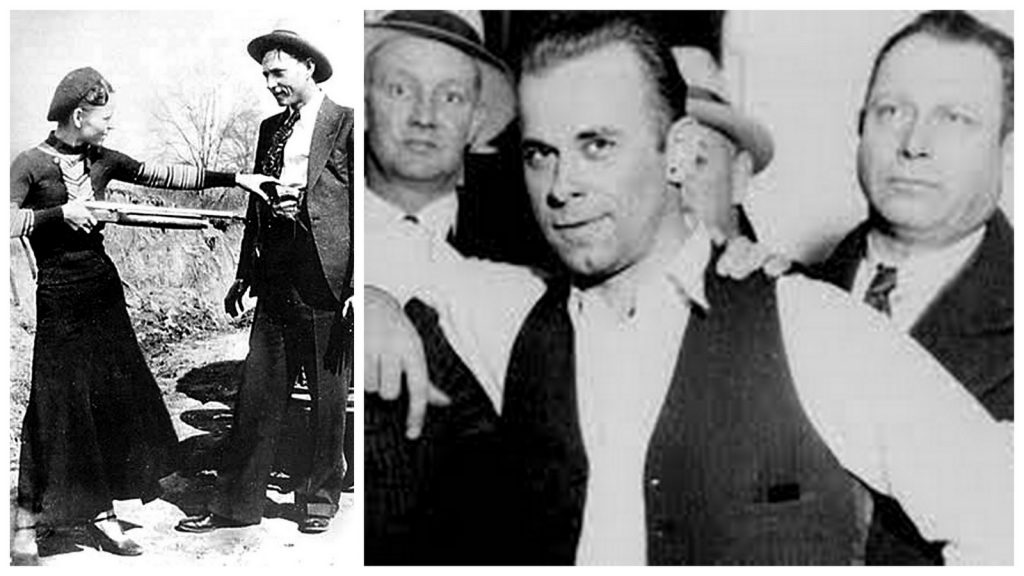
Even though the economy was on everyone’s mind in 1934, there were several other events in the news which tended to distract folks from their economic hardship. Gangsters had achieved celebrity status during Prohibition, but 1934 was a very bad year for these villains.
John Dillinger had a good early 1934 when he escaped from jail by brandishing a wooden pistol, but sadly for Dillinger, the FBI (with the help of a Romanian prostitute who agreed to set up the gangster to avoid her deportation) ambushed Dillinger outside the Biograph Theater in Chicago. He was gunned him down in a barrage of lead from the real thing. In a seamy end to the affair the prostitute was in turn double crossed by the FBI and deported.
Bonnie and Clyde also met their end is a fusillade of lead fired by dozens of lawmen who ambushed their car and Pretty Boy Floyd was shot dead in an Ohio cornfield as he made a run for the tree line.
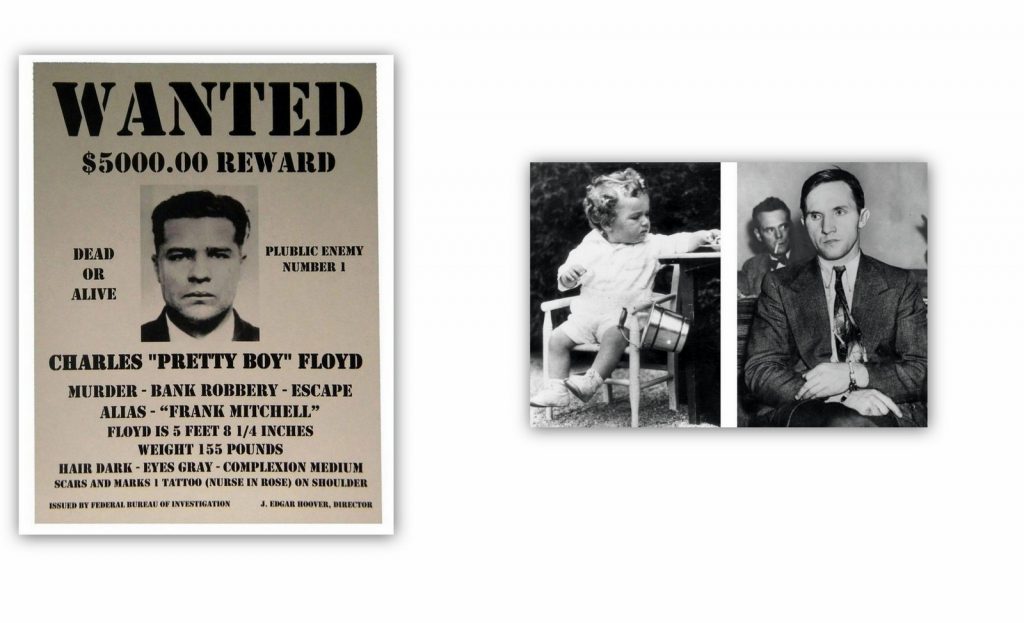
Two and a half years after the murder of the Lindbergh baby, a bank teller noticed a $10 gold certificate deposited by a gas station was on the list of bills paid for the baby’s ransom. The gas station attendant had written on the margin of the bill the license plate number of the customer’s car, which was registered to Bruno Hauptman. He was arrested on September 19, 1934, and was tried in early 1935 for the kidnapping and murder of the Lindberg baby. The trial generated a media circus unrivaled until perhaps the OJ Simpson trial.
In other odds and ends from 1934, a new game called Monopoly went on sale as did the first “canned” beer. It was made by Krueger. Donald Duck appeared in his first cartoon and RCA released the first 33 1/3 record. By way of baseball quartets Ernie Lombardi of the Cincinnati Reds went to bat in the 6th, 7th, 8th and 9th innings of a game against the Phillies and doubled in each at bat, Goose Goslin of the Tigers hit into four consecutive double plays and Red Sox batters hit four consecutive triples, all records which, we believe, still stand.
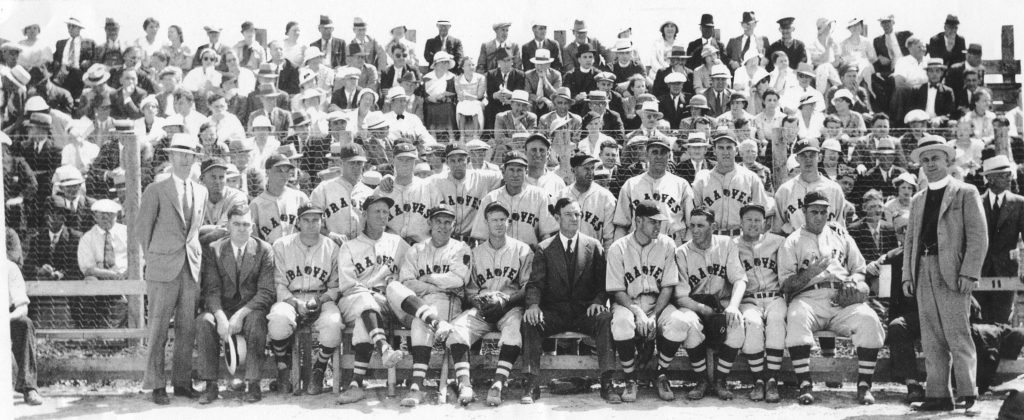
We can’t leave 1934 and baseball without mentioning the July 17th exhibition game between the major league Boston Braves and St. Stephen’s legendary Kiwanis semi-pro team, in which the starting pitcher for St. Stephen was one Ken Kallenberg, a 16-year Calais lad with a major league arm. 5000 people watched the Kiwanis team lose 11-3, and although Kallenberg was hit hard he showed enough to be on his way to the major leagues with the Giants in 1939 before the war intervened. Ken, wounded three times in the Pacific, was no longer major league material when he returned.
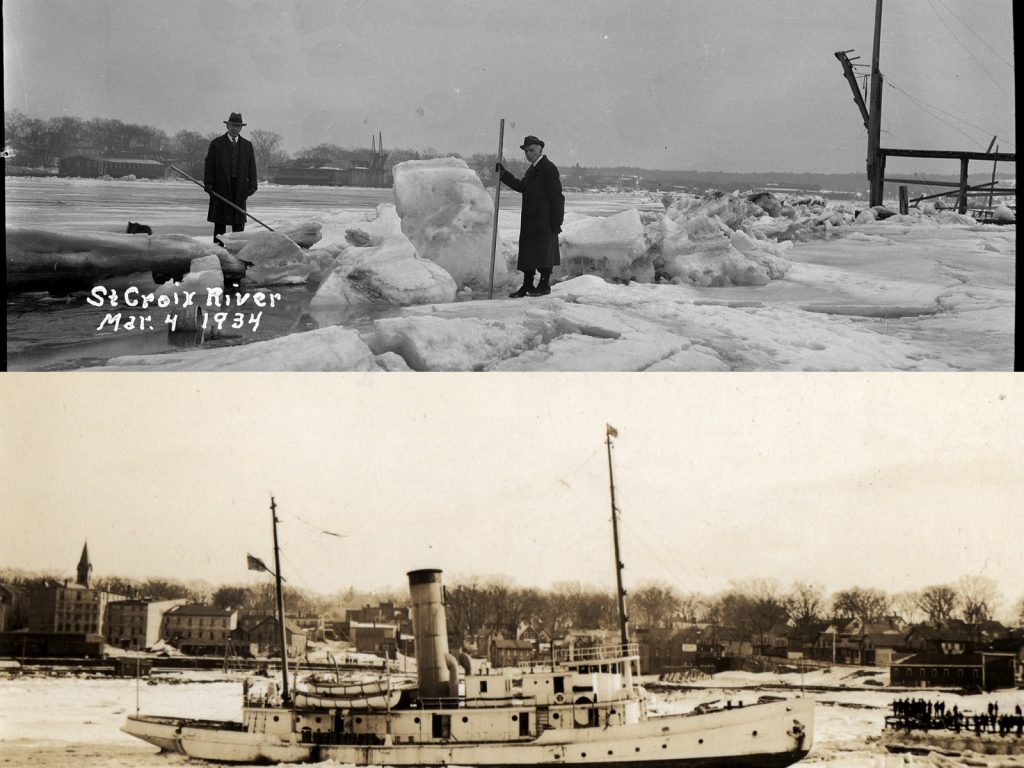
The St Croix Valley Calais had a bitter cold winter in 1934. How cold, you ask? The photos above show the river in early March, frozen so solid ships could not reach Calais to deliver needed coal and oil to heat homes and businesses. The ice breaker in the photo above shown facing the St. Stephen town wharf was sent to open the river but appears to be in need of the assistance of a much larger icebreaker.
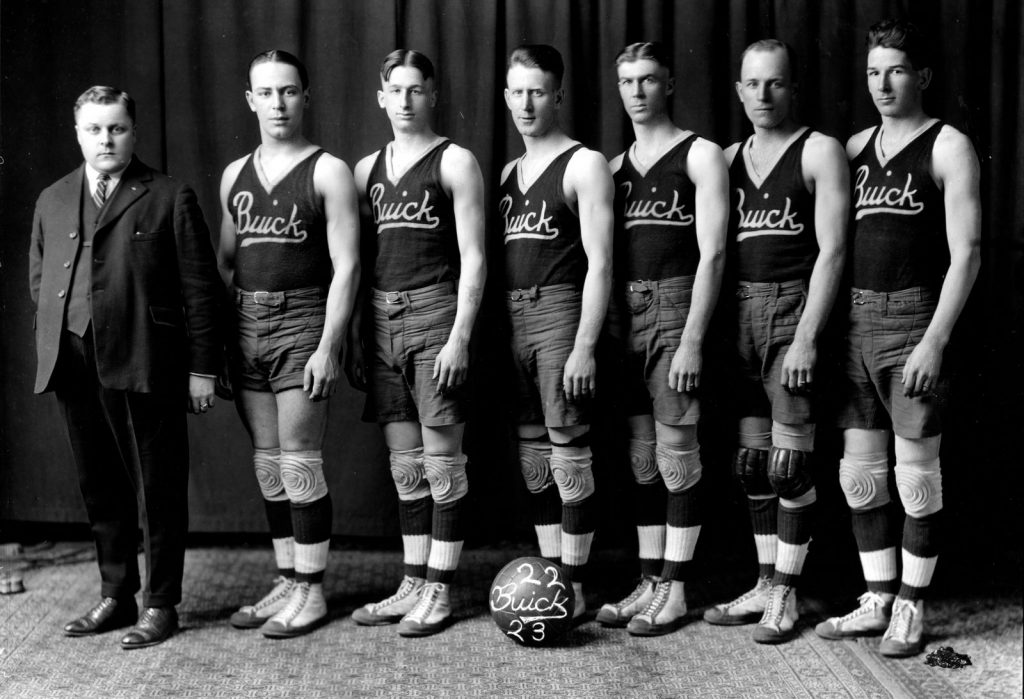
On the human-interest front, Calais Mayor Jack Woodman’s pet deer escaped and led wardens and officials on both sides of the border on a merry chase. Jack is shown above as coach of the famous Calais Buicks basketball team. When he wasn’t coaching, he was one of Calais’ most popular citizens and in 1934 did not hesitate to call in Police Chief Bobby Kerr to catch the critter.
DEER PLUNGES OVER HIGH DAM
(Runaway Pet at Calais Has Day of Thrills and Adventure
Special to The Bangor Dally News) CALAIS May 15—
Unable to stem the swift current of the St Croix in his attempt to cross the river at a point above the Canadian Cotton Mill dam Saturday a handsome deer was carried over the falls and buried in a torrent of foamy water and was hurled against the jagged rocks at the spillway of the dam thirty feet below The animal which has been kept in a box stall in the barn of game warden McKay since its capture last winter had recently been purchased by Councilor EA Woodman and with another deer was to be placed in the large enclosure recently completed at the Woodman cottage at Robbinston.
The deer was to be taken to his new home Sunday but sometime Saturday Mrs. McKay who pitied the deer in its small quarters opened the stall door to allow him to have the run of the large stable floor. Unaware of the fact one of the men entered the stable and the animal dashed out and made a tour of the north section of the city.
When he reached the riverbank above the dam he decided to visit Canada without the usual formality of reporting to the immigration officials The animal was seen by several people and a party of men rescued the animal more dead than alive when he reached the eddy on the Canadian shore below the falls. Game Warden O’Brien of Canada was notified and decided to take the deer out of town and liberate it and the animal was loaded into a truck wagon and started for the big woods. When word reached Mr. Woodman that his deer had escaped he ordered City Marshal Kerr to go forth and catch It and although the scent was getting cold the marshal picked up the trail and in the vicinity of the river met a party who said they had seen the deer but that the Canadian game warden had caught him and was taking him to the woods.
The Marshal and “Jack” overhauled the rescue party just as they were about to turn the deer loose. Convinced that it was a pet deer and the property of the claimants it was brought back to Calais. Later he was wrapped in blankets and taken to his new range in a padded truck. An examination showed that no bones were broken but he had suffered severe bruises and much hair and hide had been lost in his wild plunge.
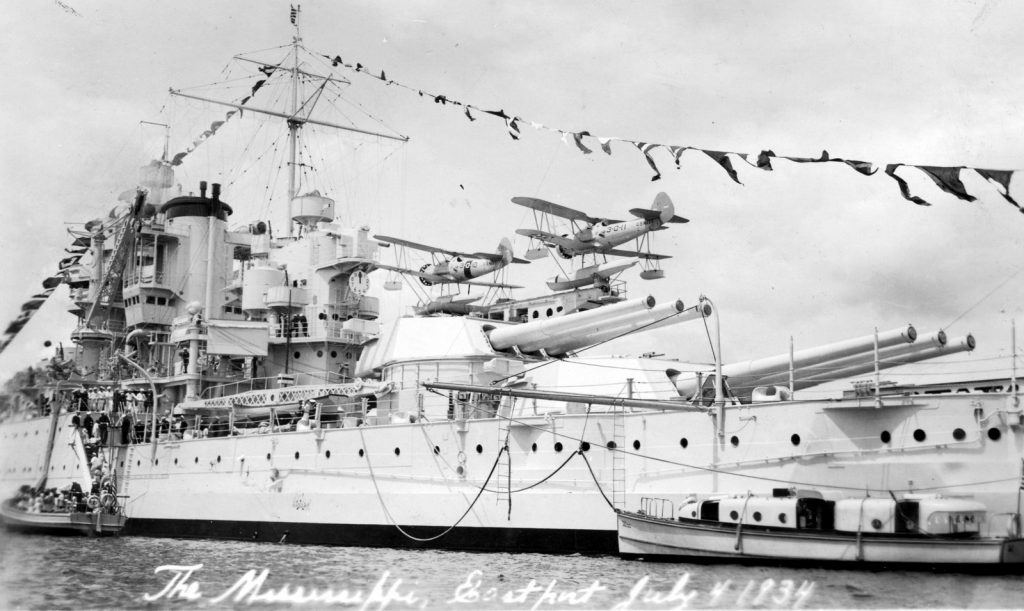
In Eastport, the Navy sent the magnificent battleship Mississippi to join in Eastport’s 1934 Fourth of July celebration which gives us some notion of long Eastport has hosted Maine’s biggest bash on the 4th.
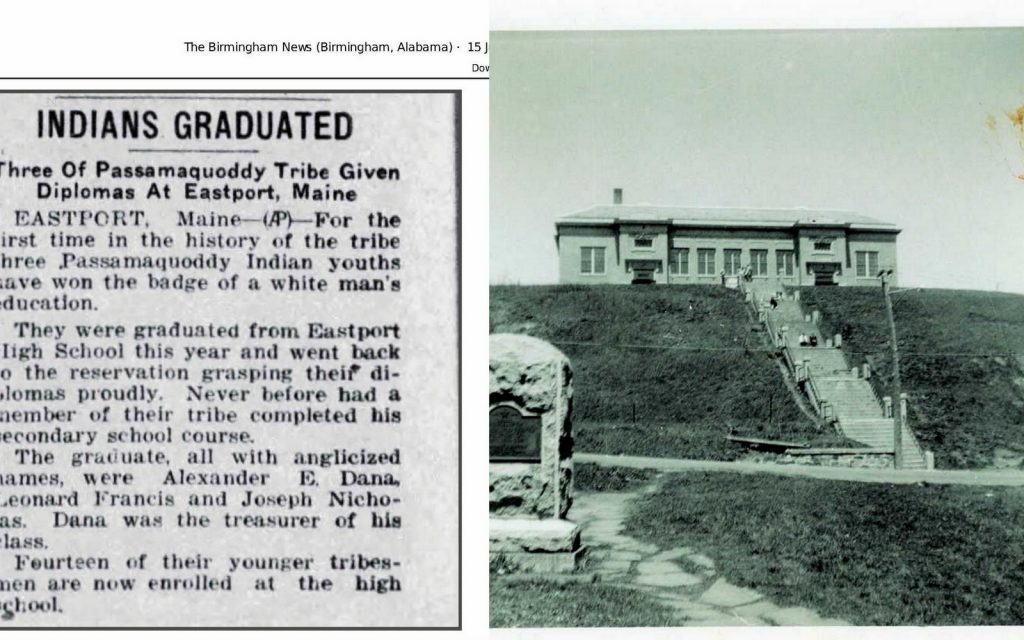
A few other 1934 Eastport items caught our eye. Dozens of papers throughout the country reported the graduation of the first Passamaquoddy Tribal members from Shead High School which, as can be seen from the photo, looked a good deal different in the early days.
Other Eastport items reported in the Bangor Daily:
“Strange are the currents of trade. Here’s Eastport Maine, buying salt from Egypt, 2,000 tons of it, to preserve the little herrings called sardines. Its “solar salt” produced by evaporation of Mediterranean Sea water in “pans” or shallow pools, same as in the Turk’s Islands, where Bangor used to get a lot of salt in the old days. From Port Said to Eastport, Me in a Norwegian steamer, to cure sardines to compete with Norwegian and French sardines.”
Dozens of national papers printed a map of Alaska and the Aleutian Islands under which was a caption as follows:
“THE ALEUTIAN ISLAND, Extending from the Alaskan Coast, reach further WEST of Seattle than Eastport Maine is EAST of Seattle.”
In other St. Croix Valley odds and ends from 1934, Henry Ford was said to have developed a $47 million plan to take over the moribund Quoddy project to power plants to manufacture aluminum and stainless steel for a new low-priced automobile.
The Airline was designated ‘Route 9”, formerly being Route 138, which went from Augusta, through China, Unity, Hampden, to Bangor and then over the airline to Calais.
The News and Observer of Raleigh N.C. and many other national papers reported that Mrs. David Wheelock of Calais “Though only 42 years old is the mother of 19 children. Her most recent baby was a boy weighing 11 pounds”.
Chief Constable Bobby Kerr on instructions from municipal authorities told shop and hotels owners to remove their many slot machines and other gaming devices as they were now illegal in Calais. We very much expect the machines were simply moved into a back room.
The Canadian authorities prosecuted three Canadian car owners for buying gas on the U.S. side “without bothering to pay either the Federal duty of 2 ½ cents per gallon or the provincial tax, which is now eight cents.” The price of a gallon of gas in 1934 was 19 cents a gallon so it doesn’t take a math genius to understand why the Canadians were willing to risk the fine.
